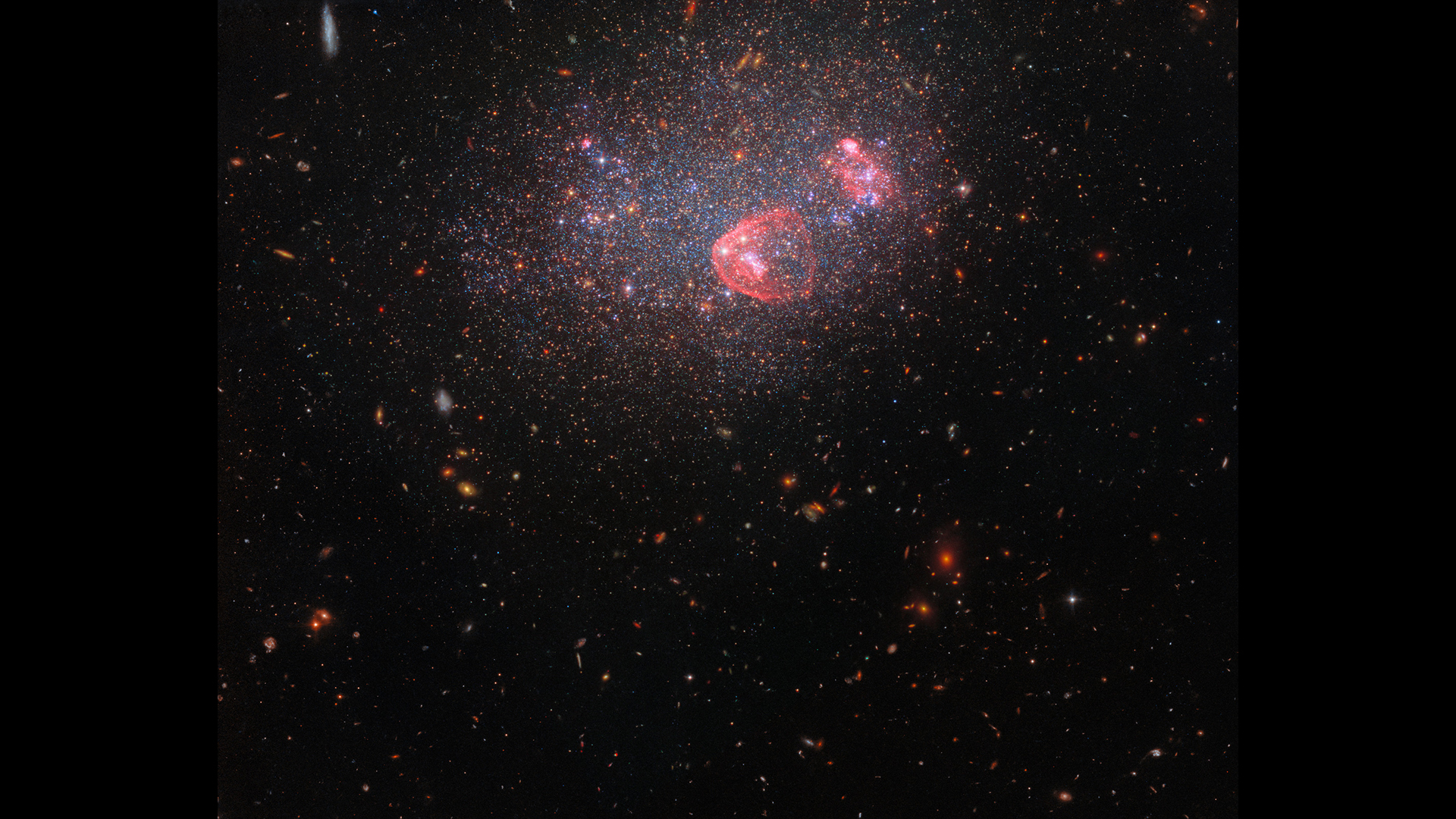
What it is: The irregular dwarf galaxy UGC 8091
When it was unveiled: Jan. 1, 2024
Where it is: 7 million light-years away, in the constellation Virgo
Why it's so special: We live in a "grand design" galaxy, with two prominent spiral arms that together contain up to 100 billion stars, according to NASA. But how the Milky Way and other similar galaxies became so structured and well defined is a mystery to astronomers. Could the key be tiny, messy galaxies like UGC 8091?
Imaged here by the Hubble Space Telescope, UGC 8091 is an irregular dwarf galaxy thought to exist in the same Local Group as the Milky Way. Astronomers think there are about 20 galaxies in this cluster, most of them either elliptical — the oldest and most evolved type of galaxy — or spiral, like the Milky Way. Loose, messy dwarf galaxies like UGC 8091 are often referred to as "galactic building blocks," since larger, more complex galaxies are thought to grow as smaller ones merge, according to the Hubble website. Dwarf galaxies may have helped to reheat the hydrogen that had cooled as the universe expanded after the Big Bang, according to NASA.
The red regions of the image are likely interstellar hydrogen molecules that are glowing because they have been excited by the light from hot, energetic stars, according to NASA. The image also shows older stars and, in the background, distant galaxies.
The image was created using data from Hubble's Wide Field Camera 3 and Advanced Camera for Surveys between 2006 and 2021. Twelve camera filters were needed to make the image, because the Hubble data includes light the human eye cannot see, from mid-ultraviolet to the red end of the visible spectrum.







